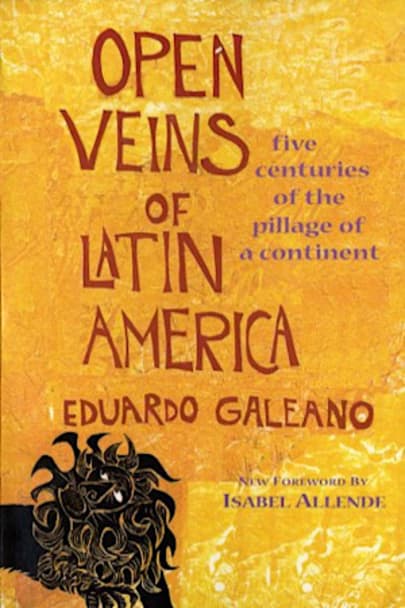Since its U.S. debut a quarter-century ago, this brilliant text has set a new standard for historical scholarship of Latin America. It is also an outstanding political economy, a social and cultural narrative of the highest quality, and perhaps the finest description of primitive capital accumulation since Marx.Rather than chronology, geography, or political successions, Eduardo Galeano has … Eduardo Galeano has organized the various facets of Latin American history according to the patterns of five centuries of exploitation. Thus he is concerned with gold and silver, cacao and cotton, rubber and coffee, fruit, hides and wool, petroleum, iron, nickel, manganese, copper, aluminum ore, nitrates, and tin. These are the veins which he traces through the body of the entire continent, up to the Rio Grande and throughout the Caribbean, and all the way to their open ends where they empty into the coffers of wealth in the United States and Europe.
Weaving fact and imagery into a rich tapestry, Galeano fuses scientific analysis with the passions of a plundered and suffering people. An immense gathering of materials is framed with a vigorous style that never falters in its command of themes. All readers interested in great historical, economic, political, and social writing will find a singular analytical achievement, and an overwhelming narrative that makes history speak, unforgettably.
This classic is now further honored by Isabel Allende’s inspiring introduction. Universally recognized as one of the most important writers of our time, Allende once again contributes her talents to literature, to political principles, and to enlightenment.
more



Open Veins of Latin America: Five Centuries of the Pillage of a Continent was honestly life-changing for me. The author refuted the book just before he died, but his sharp analysis of a brutal history that’s been ignored or rewritten for generations holds true.
Having attended public school in the United States, I was shamefully unaware of the …
Eduardo Galeano completed Open Veins of Latin America in 1970. Millions of copies of it in dozens of languages have been sold around the world since then; it has been revised twice since then with addenda and new introductions for anniversary editions. But the distinctive yellow cover remains the same as does the strong narrative voice which leads …